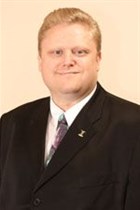
Related




Tourism in flux: Why economics, policy and storytelling will decide who wins
Katie Andrews 21 Oct 2025


Top stories






LegalKenyan court postpones case seeking to halt Diageo's $2.3bn sale of EABL
Duncan Miriri and Emma Rumney 2 days
More news












I believe that apart from these megatrends, there are five key trends specific to South Africa that will impact on South Africa’s Tourism Industry in 2020.
The business rescue process of SAA may cause flight disruptions as routes are rationalised and staff may be reduced. Although the business rescue process is regulated, it will not prevent unions from, potentially, airing their grievances through strikes, which could cause further disruptions.
SAA’s 2016 annual report stated that in the 2016 financial year, SAA carried 6.92 million passengers. Even if SAA’s capacity is rationalised and reduced by 10%, this translates to 692,000 passengers that will require alternative flights.
Although forecasts amongst leading economists differ on the exact economic growth rate that South Africa would achieve, the consensus is that South Africa’s economic growth will be slow in 2020. This slow growth will lead to less disposable income for tourism and leisure.
The total number of overnight domestic trips in South Africa has declined from 25,2 million in 2013 to 17,7 million in 2018, representing an average annual decline of 6.8% per annum. This decline in domestic tourism is expected to continue with the slow economic growth in 2020 and the resulting strain on disposable income.
The impact of load shedding was felt on a national level, while the impact of prolonged drought was felt mainly in Cape Town. Load shedding is expected to continue in 2020.
While the water crises have been addressed in Cape Town, various other South African destinations are suffering from prolonged drought, including the Eastern Cape and Northern Cape. It has been reported that more than 50% of Eastern Cape dams are less than half full and 44 towns are affected.
The impact of electricity and water shortages are twofold. Firstly, tourism enterprises are forced to invest in alternative electricity and water supply for their guests. Secondly, tourists may change their travel plans to destinations that do not suffer from electricity and water shortages.
Air connectivity into and within Africa has grown in recent years. This has led to a change in the travel behaviour of international tourists to Africa. In prior decades, international tourists flew to Johannesburg (the biggest hub for Africa at the time), had their wildlife experience in South Africa, (usually at the Kruger National Park) and then flew to Victoria Falls and Cape Town, before concluding their trip, usually by departing from Johannesburg.
With the rise of African based airlines such as Ethiopian Airlines and Kenya Airlines, international tourists can now fly directly to Kenya for a wildlife experience, fly directly from Kenya to Victoria Falls and then fly directly from Victoria Falls to Cape Town, before departing directly from Cape Town to their country of origin.
This changing travel behaviour has benefited destinations such as Kenya where Kenya Airways, for example, during its first year of flying between Nairobi and New York, completed 594 non-stop flights and ferried over 105,000 passengers. Arrivals on international flights to Cape Town between 2013 and 2018 grew at an average annual compound growth of 12.3% per annum.
In contrast, arrivals on international flights to Johannesburg between 2013 and 2018 declined at an average annual compound rate of 1.3% per annum. The number of visitors to the Kruger National Park declined by 2.1% between 2017/18 and 2018/19.
The views of international tourists on animal interactions are changing. Given that wildlife is an important sector of South Africa’s tourism industry, it is important to note that international tourists are asking questions about the welfare of animals and the appropriateness of animal interactions.
In response to this changing view, SATSA has launched a guide and tool for evaluating captive wildlife attractions and activities. The guide and tool provide key questions that could be asked of the captive wildlife attraction and activity, which will allow the tour operator and tourist to make their own decision on whether the attraction and activity is ethical.
I believe that 2020 will be a tough year for the South African tourism industry but that initiatives such as the easing of visa regulations and the development of new routes and product offerings for existing and new markets offer opportunities.
These opportunities include using South Africa’s cuisine, adventure activities, scenic beauty (outside of the main tourism destinations), music and culture and heritage to offer authentic experiences.
